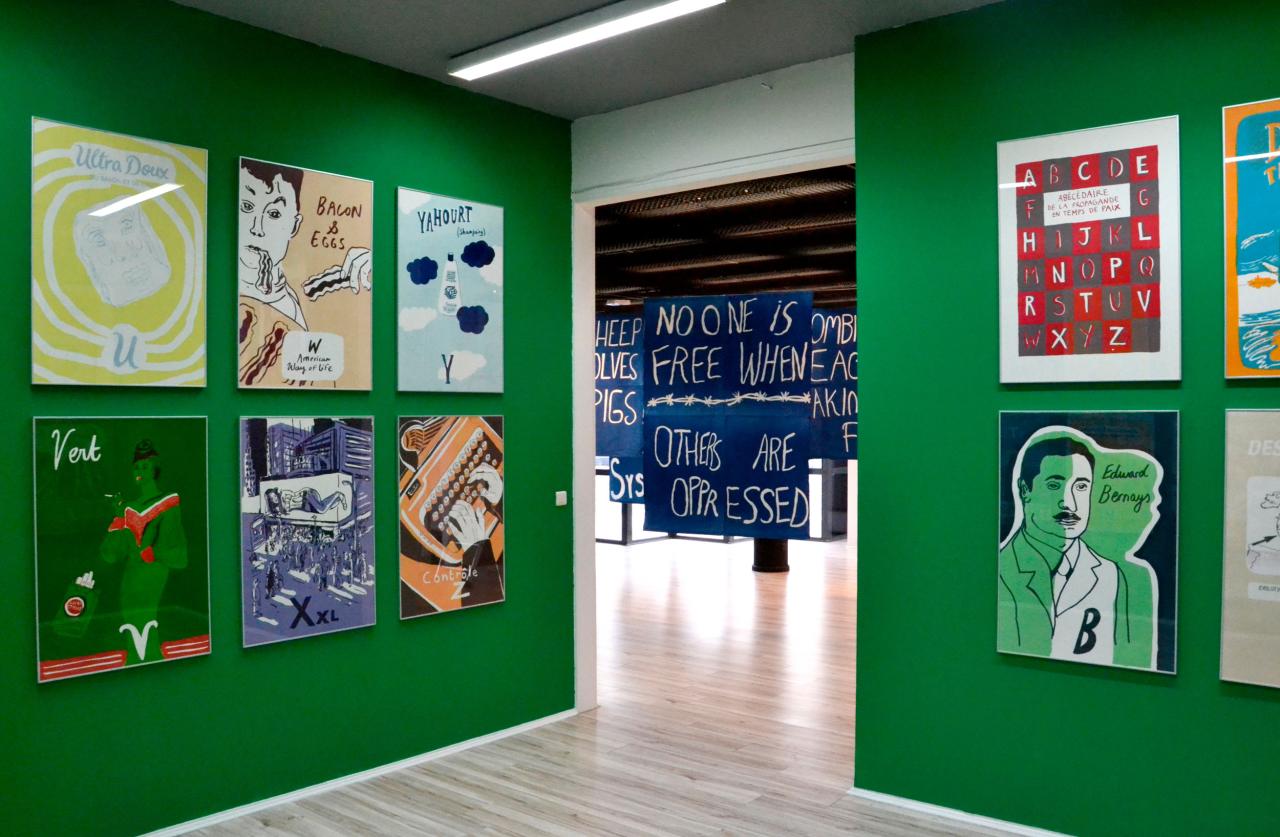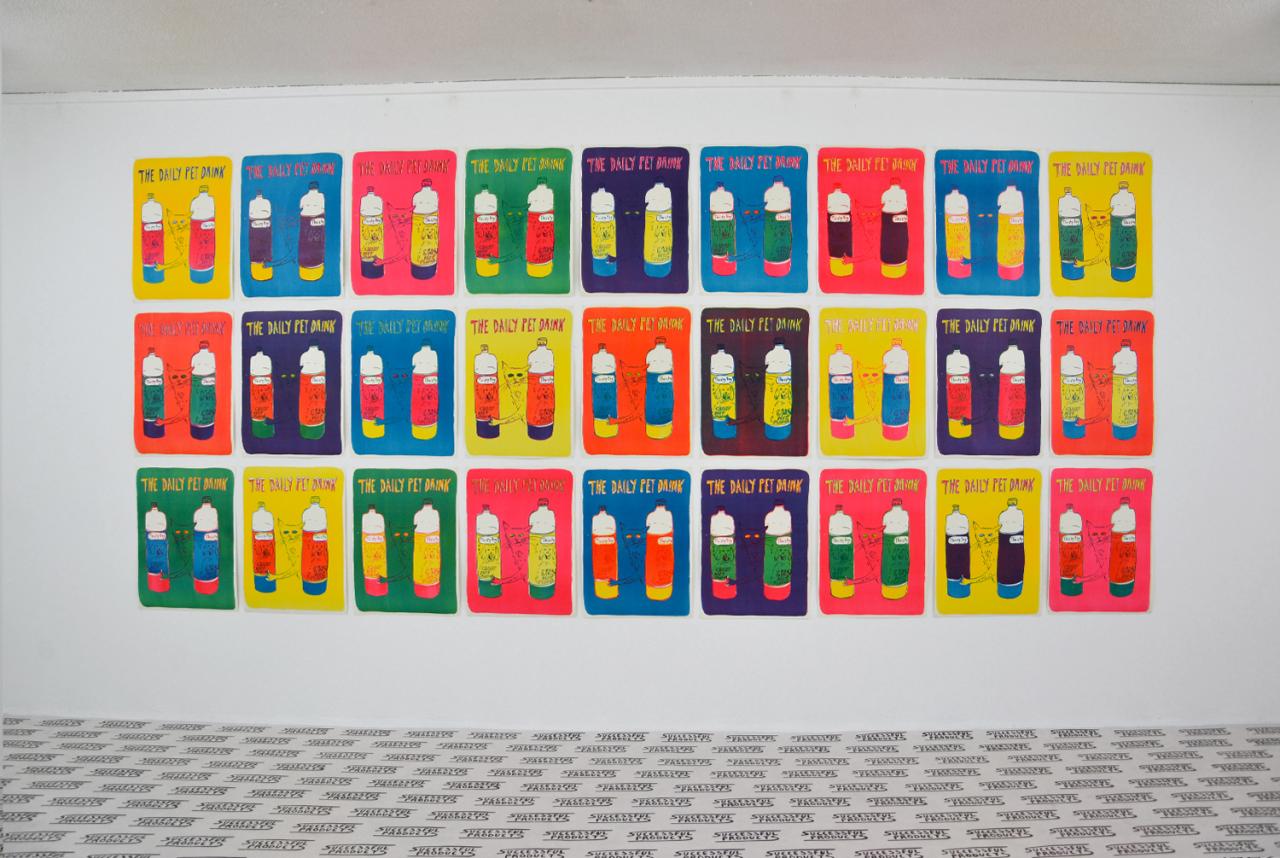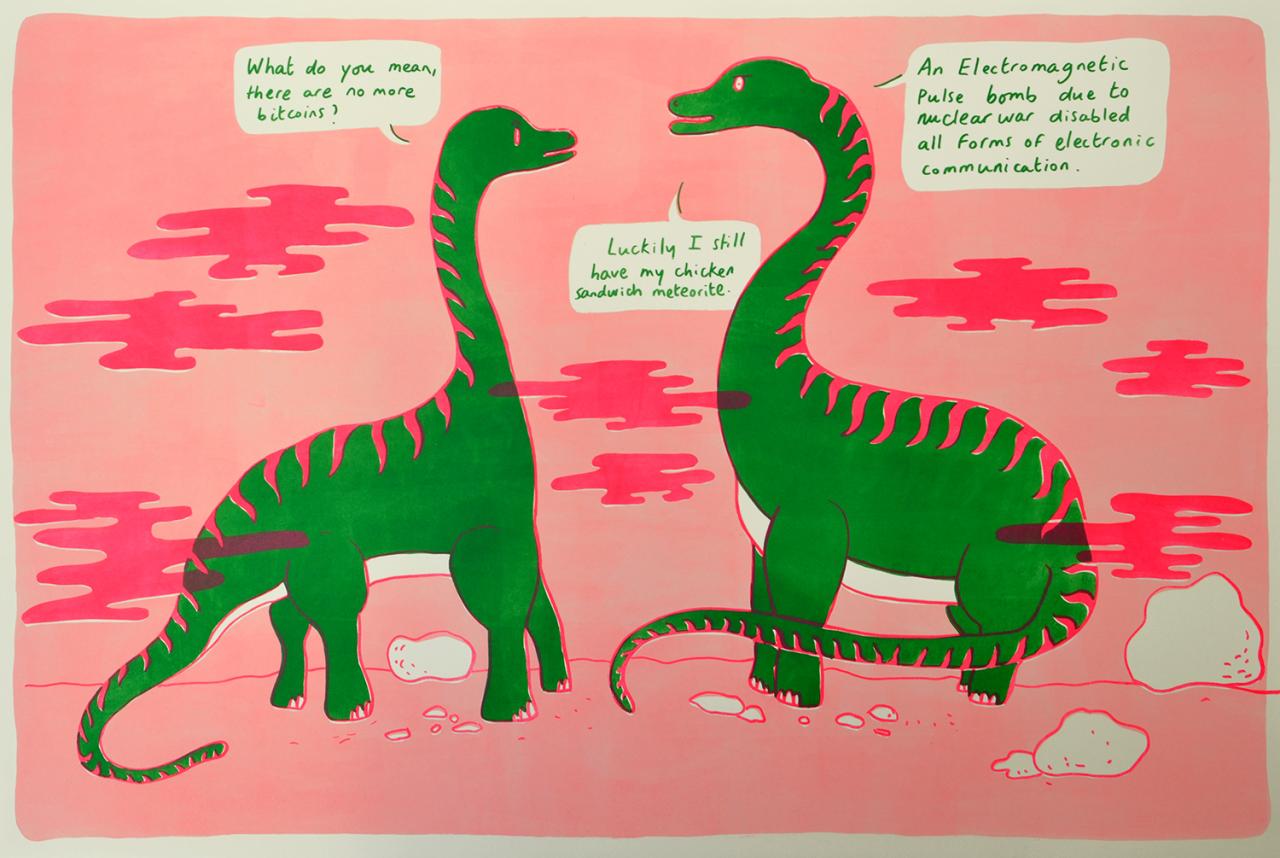Lucy Watts
Born in 1988
Lives and works in Isere



Françoise Lonardoni, 2015
For Sketch in, sketch out, a joint exhibition with Ludovic Paquelier, Espace arts plastiques Madeleine-Lambert, Vénissieux
Lucy Watts’s raw material is information, which she collects in somewhat of a mischievous and critical way. She lambasts the unlikely products that consumer society creates, as well as all manners of statistics and the ubiquity of marketing messages, the insistence and incongruity of which we have become accustomed to through habituation1. Her work consists in reproducing these elements in a different framework and using slower techniques such as drawing or etching in order to do so: screen printings, lithography, and mediums that are also easily portable and have little market value.
The strength of Lucy Watts’s approach is probably due to the fact that she invents nothing: all the subjects that she picks out are pre-existing subjects. The simplicity of her visual work matches and amplifies the shortness of the messages. Her designs are clear-cut and let approximations in the crafting show through; colours and flat tints are contained within the outlines. The comic-book style that she applies to statistic pie charts or advertisements suffices to put a dent in their credibility. The artist’s aim is clear. It does not only consist in highlighting the strategies at play in the world of advertising messages or our credulity as consumers, which would in effect weaken art by making it all about morals. Rather, what she chooses to reveal is our “statistical instinct”2 – an acquired function that pulls us towards an “unreasonable rationality” that will in turn justify anything.
Disruption is another of the young British artist’s favoured mechanisms, in that it fits in well with her taste for nonsense. As an experienced engraver (especially in lithography), she uses the resources of her speciality to mix up propositions and verge on the absurd: statistical diagrams based on colour-coding are made to change colours from one print to the next, rendering them impossible to read; an advertisement for animals is printed in a range of colours and shown side by side. This playful disruption of informative mechanisms has the salutary effect of exposing, beyond the drawings themselves, the omnipresence of false truths, which in turn are justified by equally fallacious systems – hence the absurdity of devoting a creative effort to consumer society. For a while, or perhaps for a long time, her work helps us regain our sense of humour and critical acuteness.
1 In psychology, habituation is a form of learning in which an innate response to a stimulus gradually decreases after repeated or prolonged presentations of that stimulus. (Wikipedia)
2 “Our statistical instinct cuts layers out of the real and virtual substance of human qualities – destinies, accidents and passions, unemployment rates, blood rates…” Hubert Lucot, Christ sauvé?, Tarabuste editions, 2010.